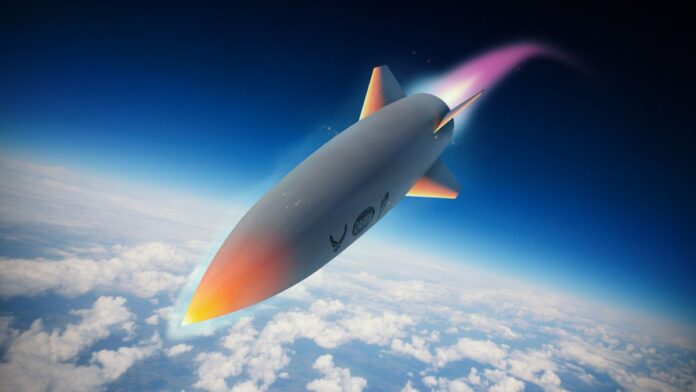The U.S. Defense Advanced Research Projects Agency (DARPA) conducted a fourth successful test flight of its Hypersonic Air-breathing Weapon Concept (HAWC) vehicle, bringing the program to a close.
The HAWC test vehicle was deployed from a Boeing B-52 Stratofortress plane, at which point its rocket booster ignited, propelling the craft to a speed at which its scramjet engine ignited. Once in flight, the HAWC vehicle flew for over 300 nautical miles (556 kilometers) and reached altitudes higher than 60,000 feet (18.3 km), according to a DARPA statement (opens in new tab). The agency did not give a location or date for the test, stating only that it took place in January 2023.
DARPA added that this test marks the completion of the HAWC program, one that “accomplished all of its initial objectives.” DARPA will now use the data gathered from these four flight tests with a new program, More Opportunities with HAWC (MOHAWC), in order to build and fly more hypersonic test vehicles with the goal of developing a craft that will be acquired and used by the U.S. military.
Related: Hypersonic air-breathing weapon concept passes 2nd flight test
Lockheed Martin, who with Aerojet Rocketdyne developed the version of the HAWC weapon flown in this most recent flight test, issued its own statement (opens in new tab) praising the program’s success. “Both of our HAWC flight tests launched from an operational aircraft and matched performance models and predictions to aid affordable, rapid development of future hypersonic weapons,” Lockheed Martin vice president John Clark said in the statement.
Already, U.S. military officials are proclaiming the success of the HAWC program. “This month’s flight added an exclamation point to the most successful hypersonic airbreathing flight test program in US history,” Walter Price, an Air Force deputy for the HAWC program, said in DARPA’s statement. “The things we’ve learned from HAWC will certainly enhance future U.S. Air Force capabilities.”
The key technology being tested throughout the HAWC program is its air-breathing scramjet engine. A scramjet is a type of jet engine in which combustion takes place while the air passing through it is moving at supersonic speeds. Whereas typical jet engines use moving turbines to compress the air inside them, scramjets use their own geometry and speed to achieve this compression. Scramjets are designed to be more efficient than other types of jet engines and can reduce overall weight by removing moving parts such as turbine blades.
The data obtained from the HAWC tests will be used to further hypersonic vehicle designs in the MOHAWC program. According to a 2022 report from C4ISRNET (opens in new tab), the follow-on program will work to improve scramjet propulsion technology, reduce subsystem component size, and improve manufacturing processes.
The completion of the HAWC program adds to other recent successes the U.S. military has had in its efforts to develop and field an operational hypersonic weapon. In December 2022, the United States Air Force announced it had successfully fired its first fully operational hypersonic missile, meeting all test objectives.
Follow Brett on Twitter at @bretttingley (opens in new tab). Follow us @Spacedotcom (opens in new tab), or on Facebook (opens in new tab) and Instagram (opens in new tab).

